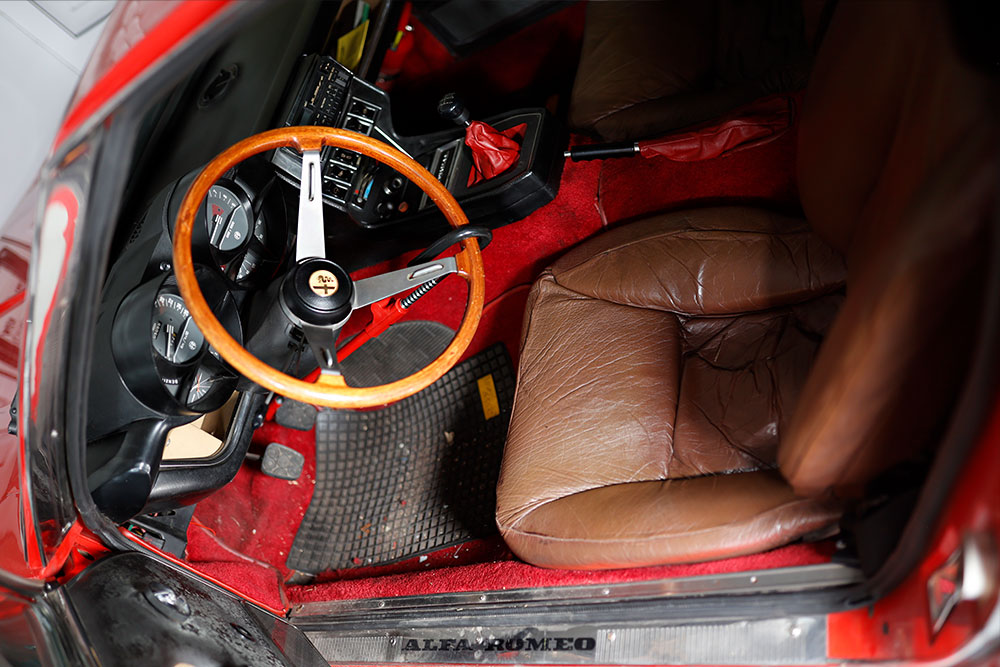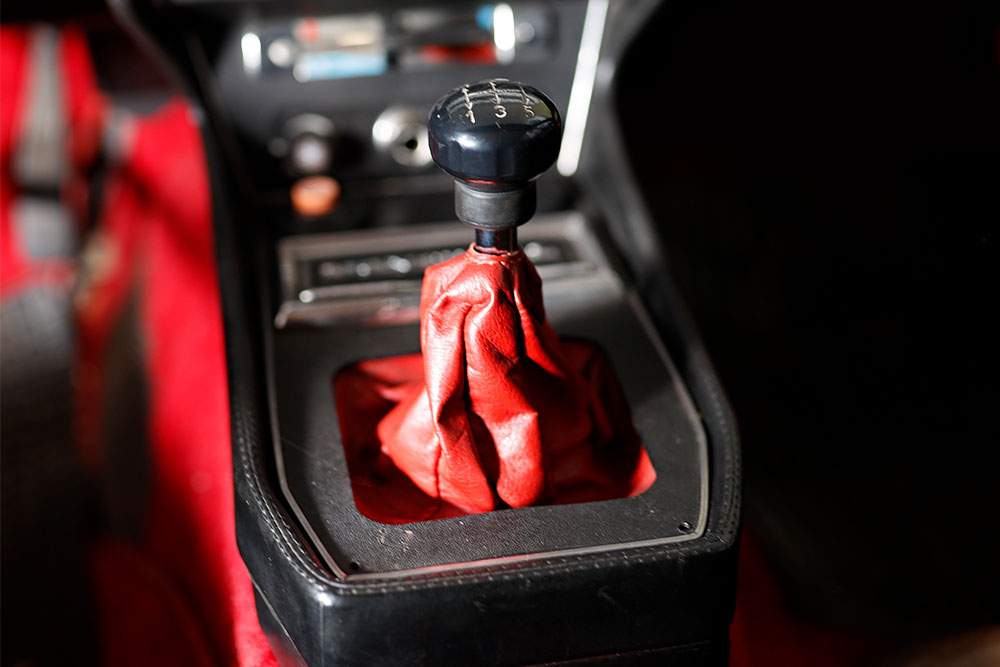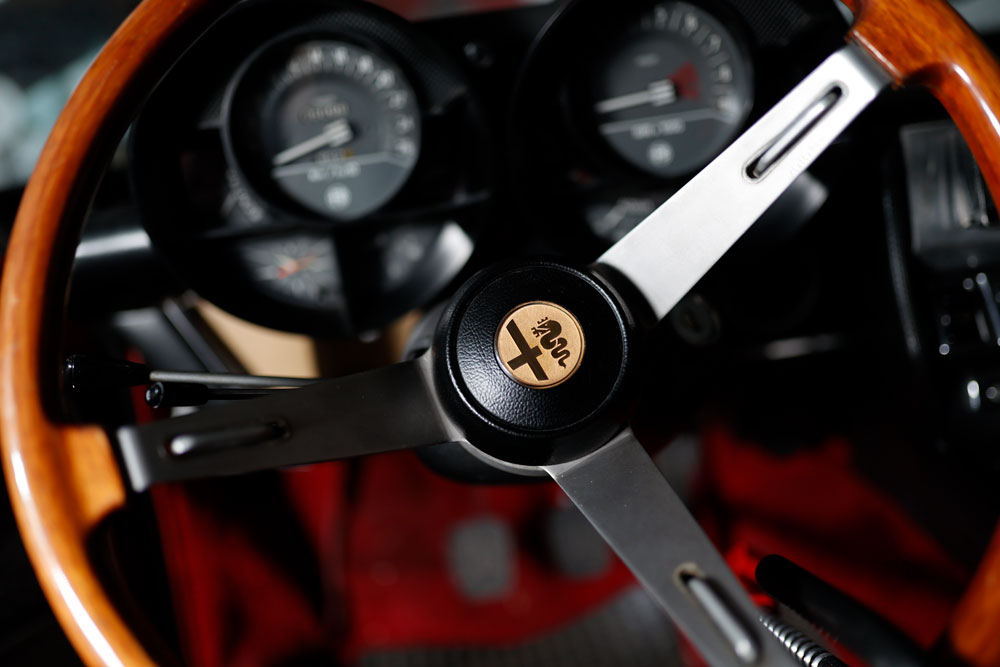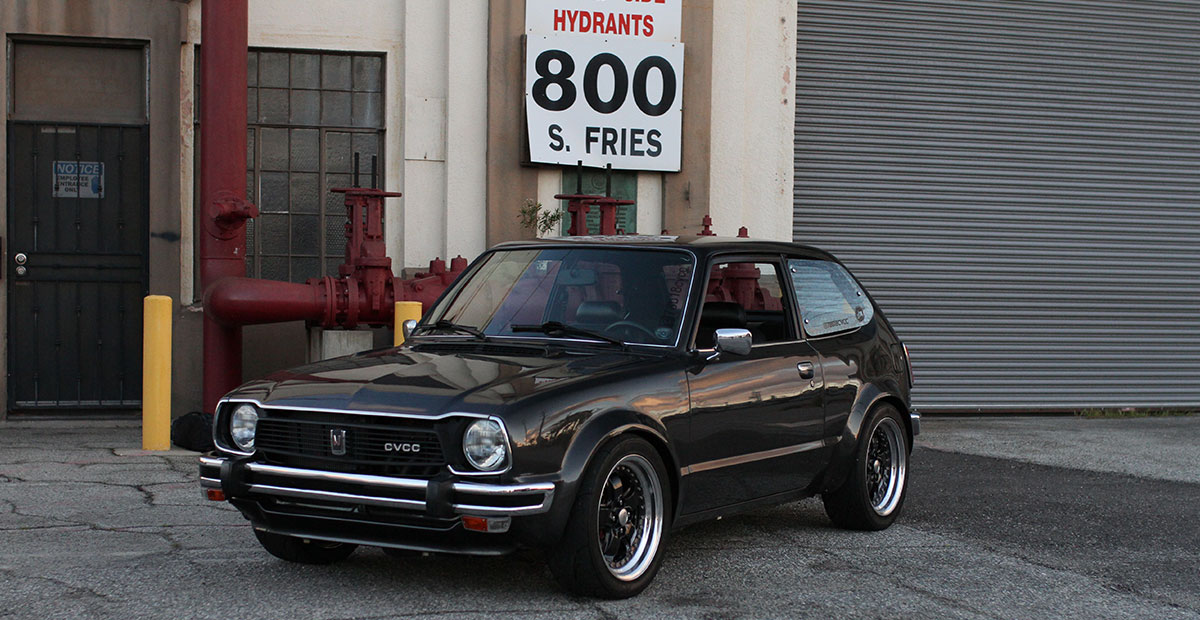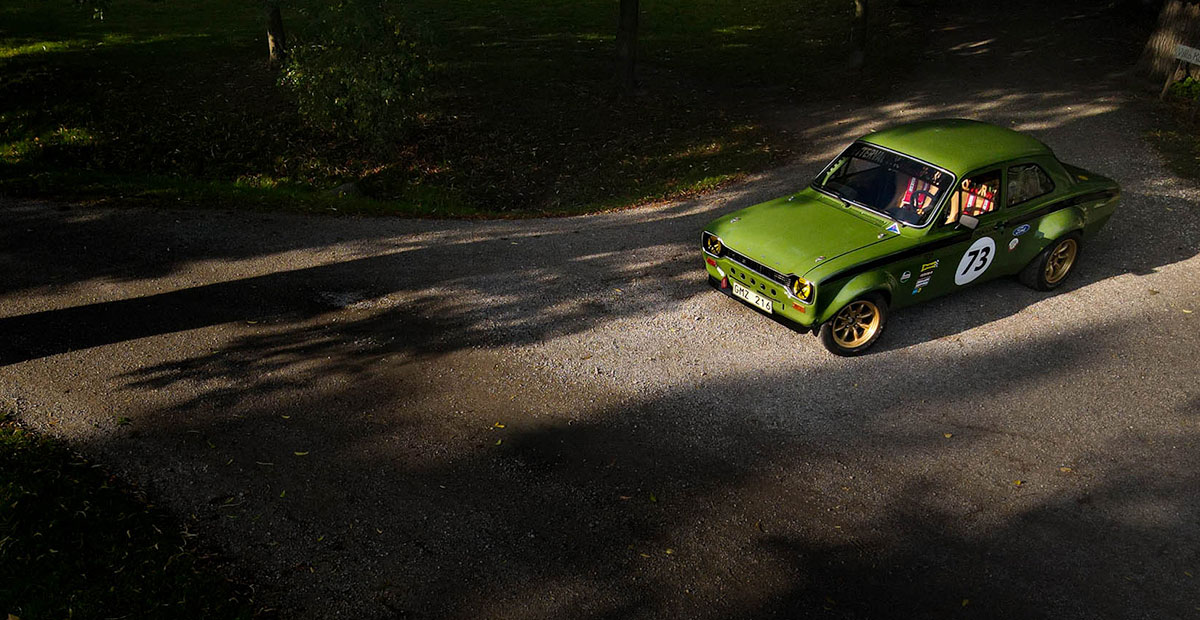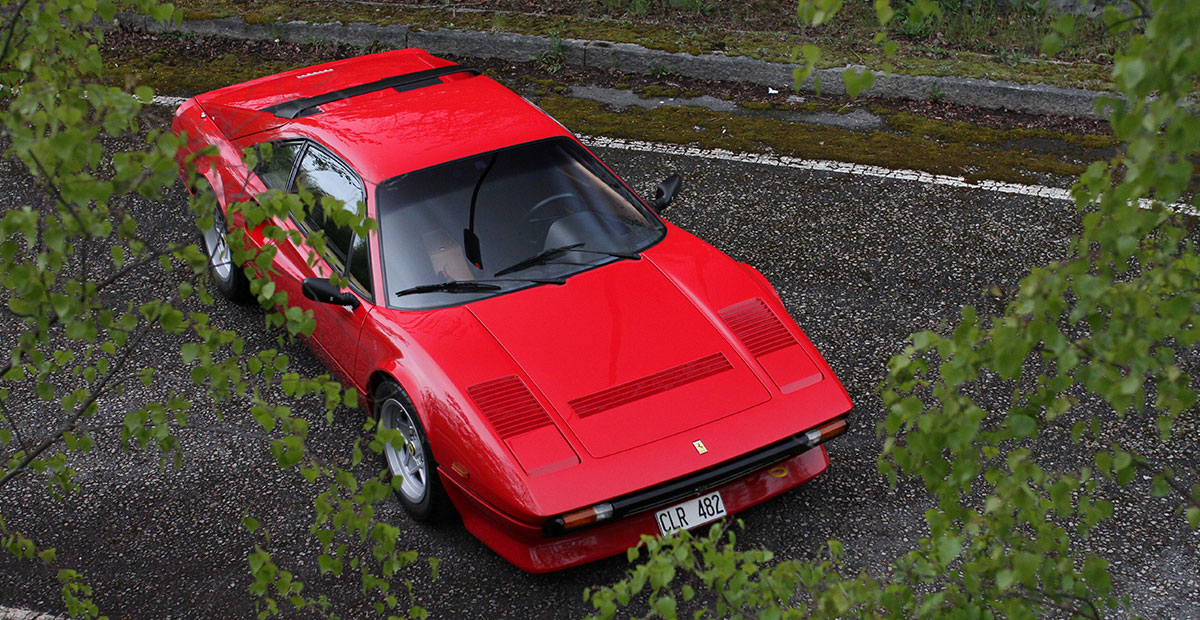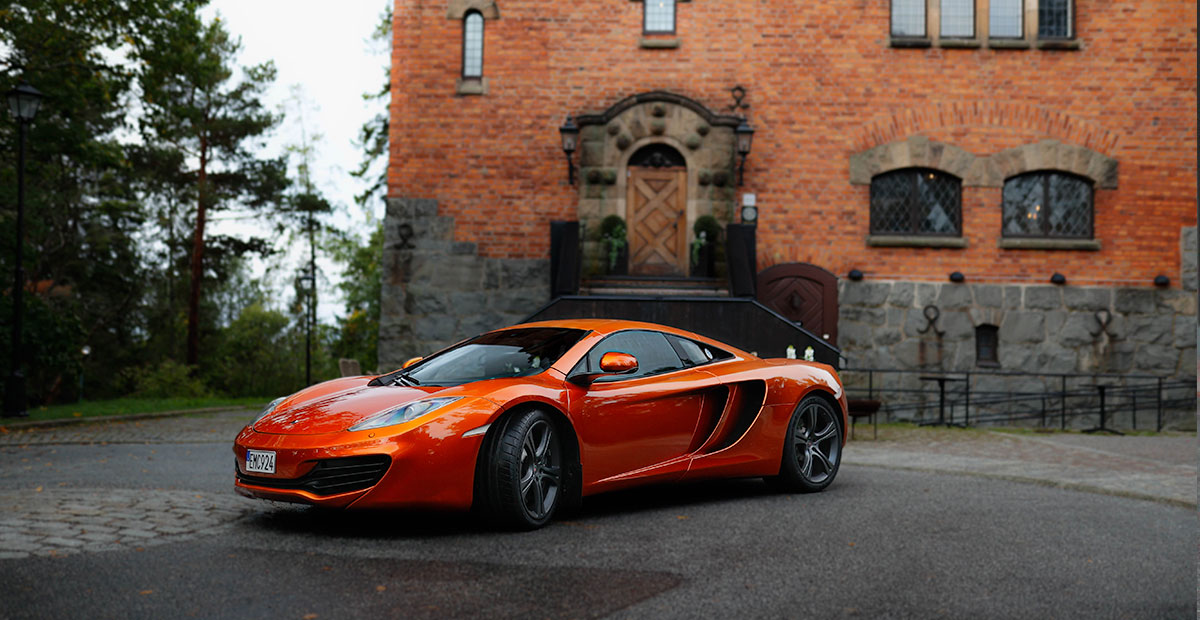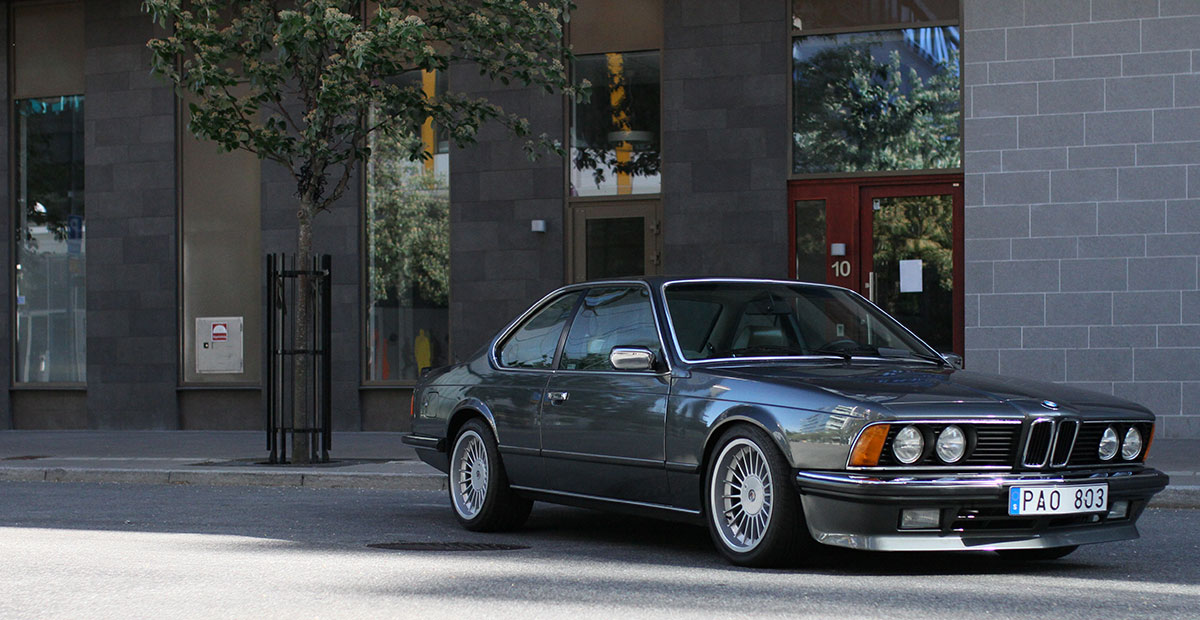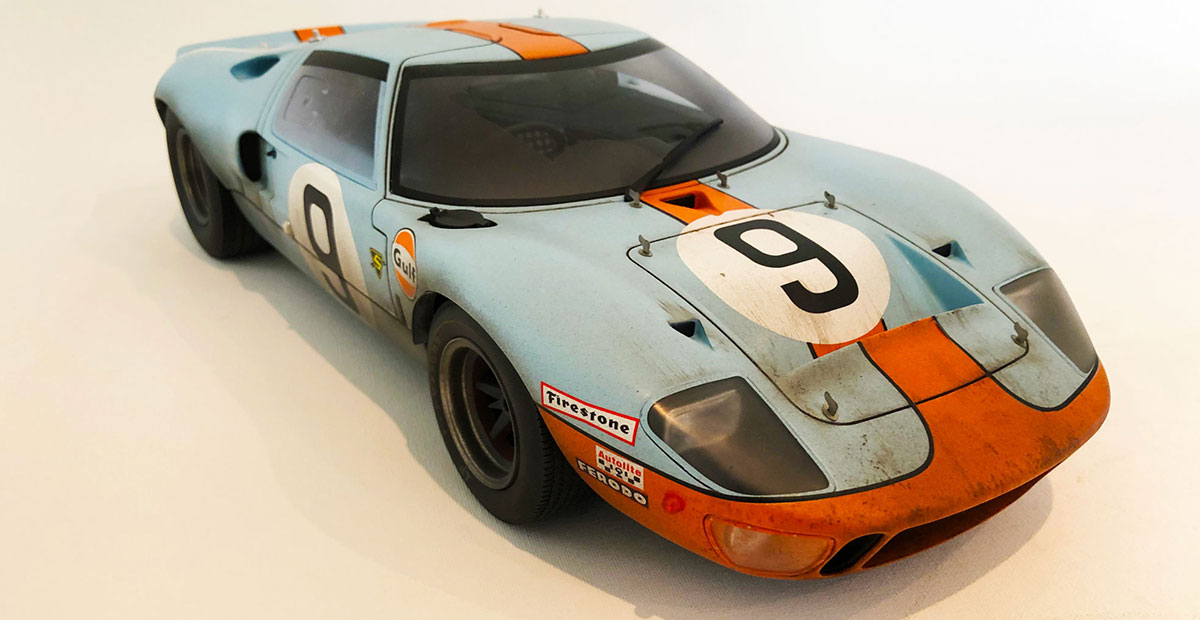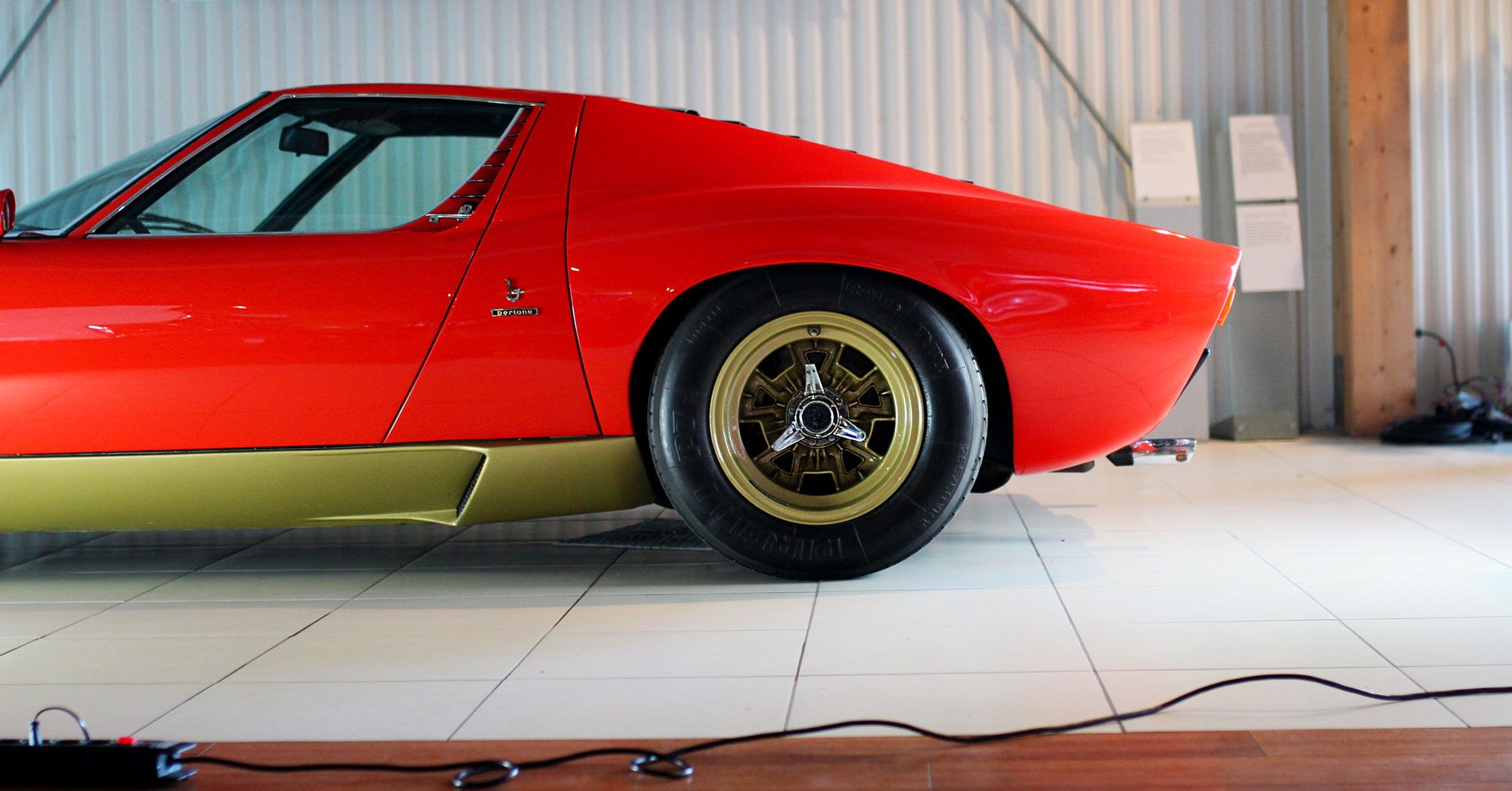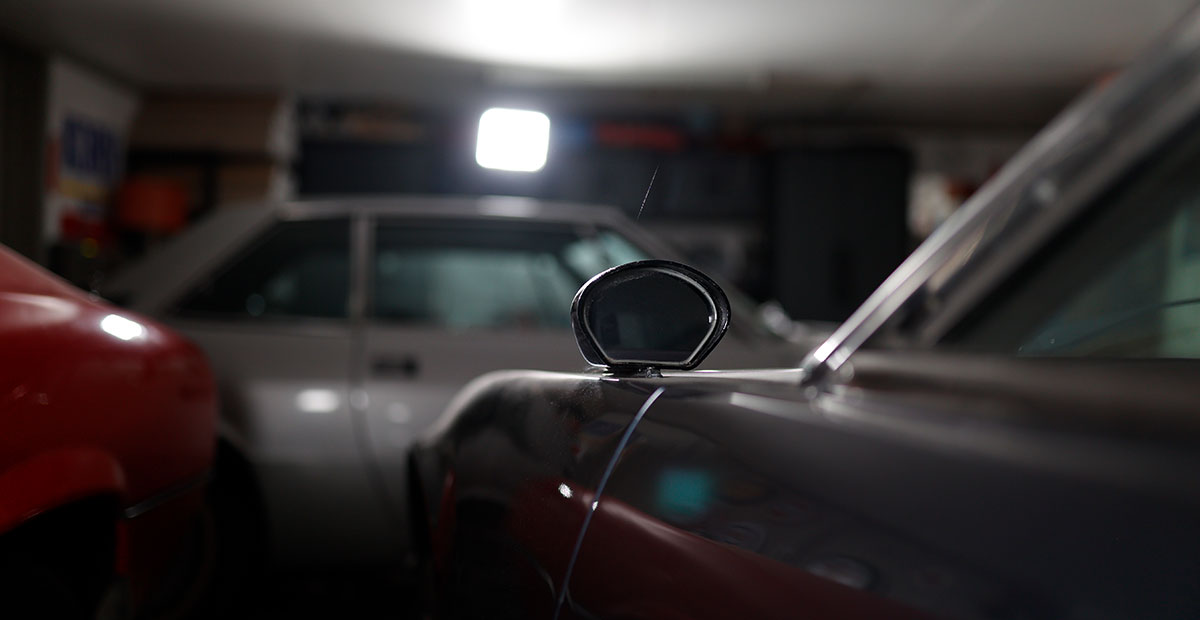
Three Italians – soon to be barn finds?
Many people often feel saddened and frustrated when they see classic beauties collecting dust in a garage or barn. After all, they should be out on the roads, covering kilometers after kilometers, because that’s what they were made for.
I find myself in a garage, gazing at three slightly different yet unusual and stunning classic cars. A shiver runs down my spine as I realize these cars have been here since the garage was built almost 20 years ago. I can’t help but wonder why they remain parked here, rather than gracing the streets, displaying their sleek lines and elegant shapes.
The garage was constructed and completed in 2004, but its exterior gives the impression that it has been standing on this site for well over a century.
All three cars were driven into this garage when it was first ready. Since then, they have remained here in the darkness, collecting dust particles that have found their way in through cracks and ventilation.
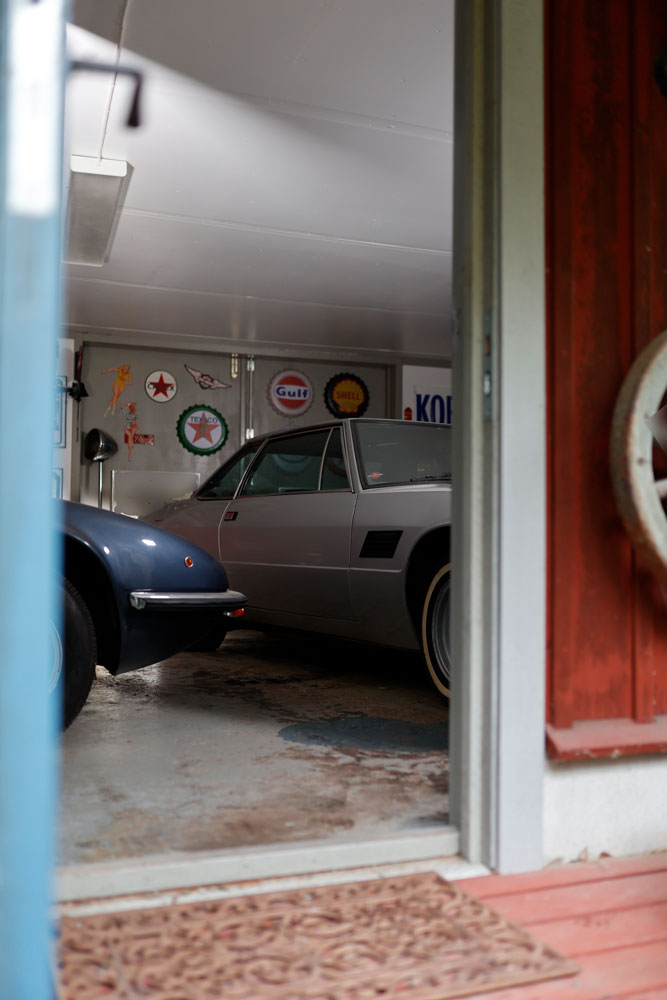
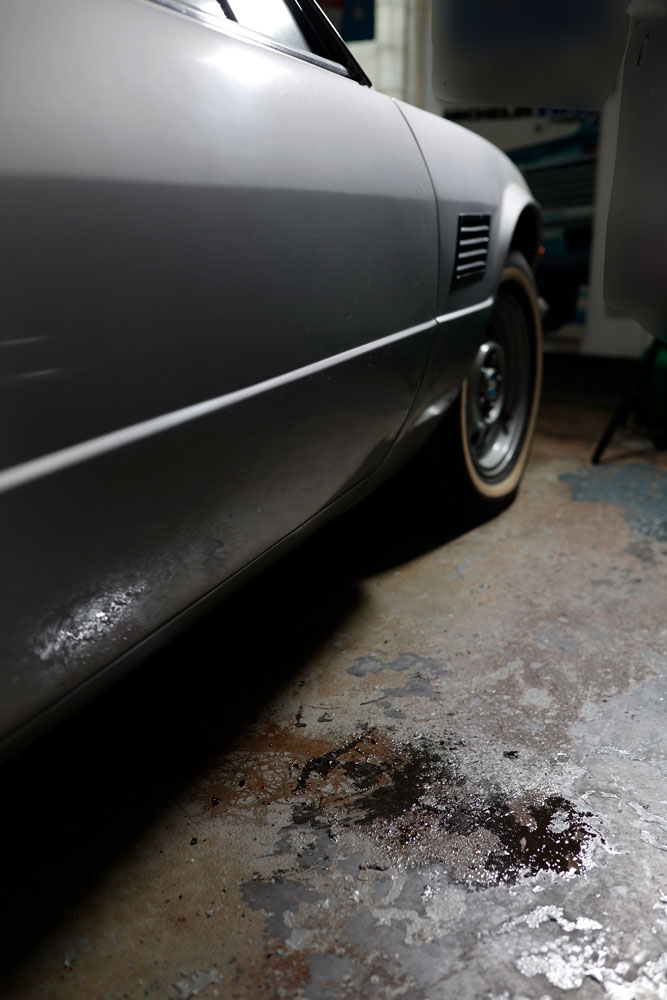
Same platform as the Maserati cousins
To the right stands a gray De Tomaso Longchamp, and next to it on the floor is a stain of red oil. It doesn’t appear that all of the approximately 7 liters (7 quarts) of transmission oil have spilled onto the floor, but rather only a small portion.
I lay down on the floor, examining which stuffing box on Ford’s C-6 transmission might have given way after the car has been here for 20 years.
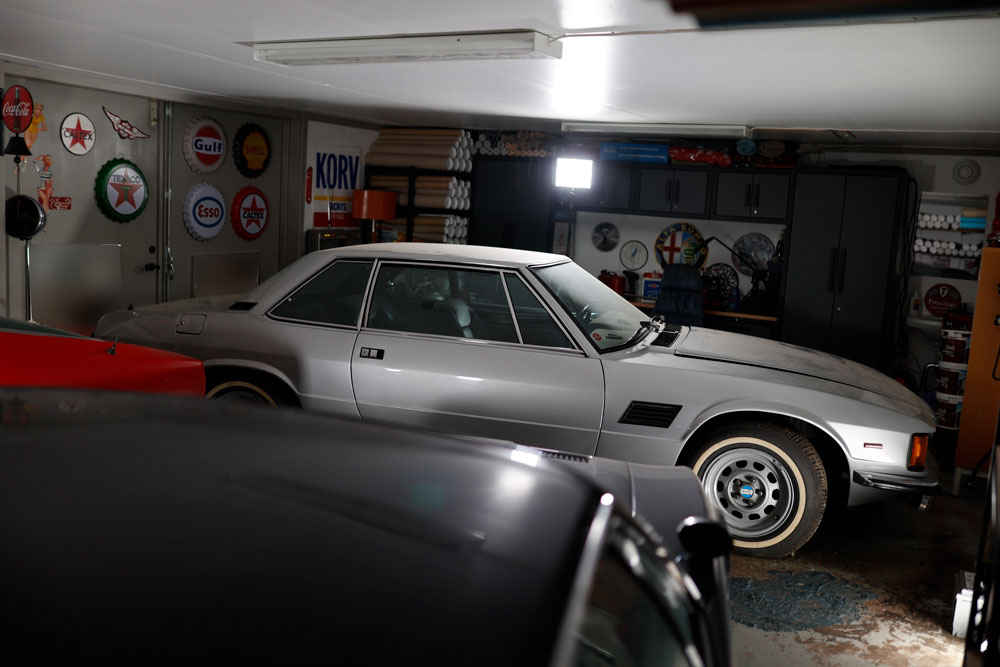
The DeTomaso Longchamp was the somewhat lesser-known sibling of the Pantera, which, like the Lamborghini Countach, was a dream for many.
The Longchamp was based on De Tomaso’s 4-door Deauville but had a slightly shorter wheelbase while retaining the same powertrain and suspension.
At the time when the Longchamp was presented at the 1972 Turin Motor Show, De Tomaso owned Maserati, so the Kyalami and Quattroporte III also shared the same platform. As you can see when you compare them side by side.
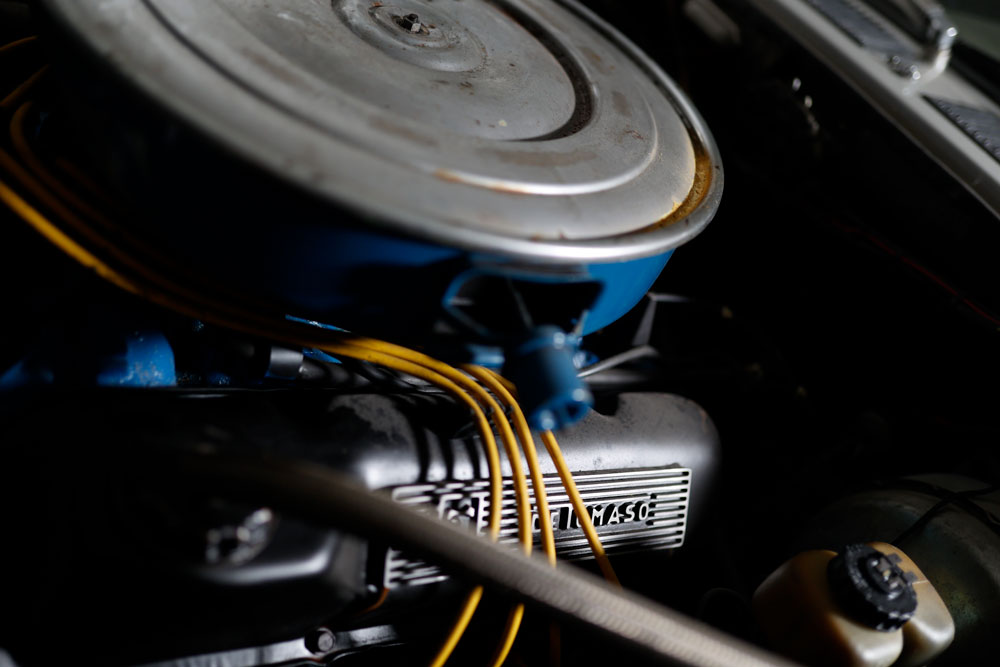
De Tomaso bought the engines from Australia
When I lift the hood, the massive blue 5.8-liter Cleveland V8 that Ford produced appears. “DE TOMASO” is stylishly inscribed on the valve covers, and the yellow ignition cables illuminate, guiding the way to the spark plugs and cylinders. When it was rolled out of the Italian factory in 1976, it boasted a capacity of 330 hp and an official top speed of nearly 240 km/h (149 mph).
This one was purchased in the early 1990s and there were clear signs that the previous owner had been bad driving with it. The tires were worn, and after only a few years, it had to undergo an engine rebuild, which, in turn, necessitated a gearbox rebuild.
During the restoration process, it became apparent fairly quickly that it wasn’t entirely composed of Ford parts. De Tomaso had made their own adjustments and modifications to the Ford components, making the entire restoration more challenging and time-consuming, as the mechanics initially assumed it was a standard Ford V8 setup.
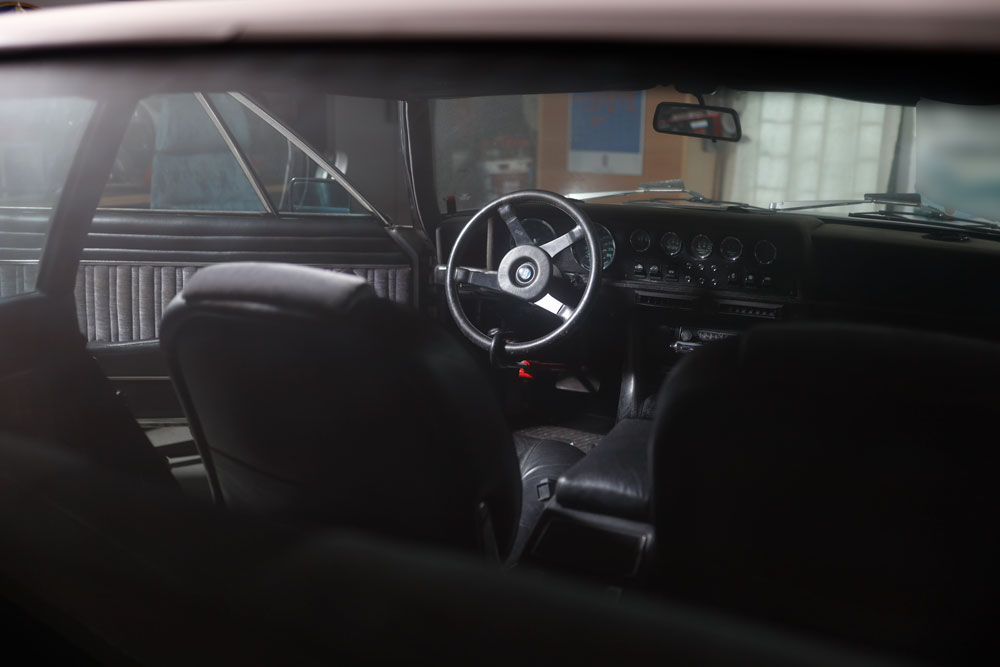
In 1982, during the production of the Longchamp, Ford USA ceased manufacturing their 351 Cleveland engines and shifted all production to Ford Australia. The engines were then shipped from Australia, passing through Switzerland for tuning, before being installed in the cars.
It was in Australia that the engine rebuilders were finally able to obtain the necessary parts to complete the rebuild and get it out on the street again.
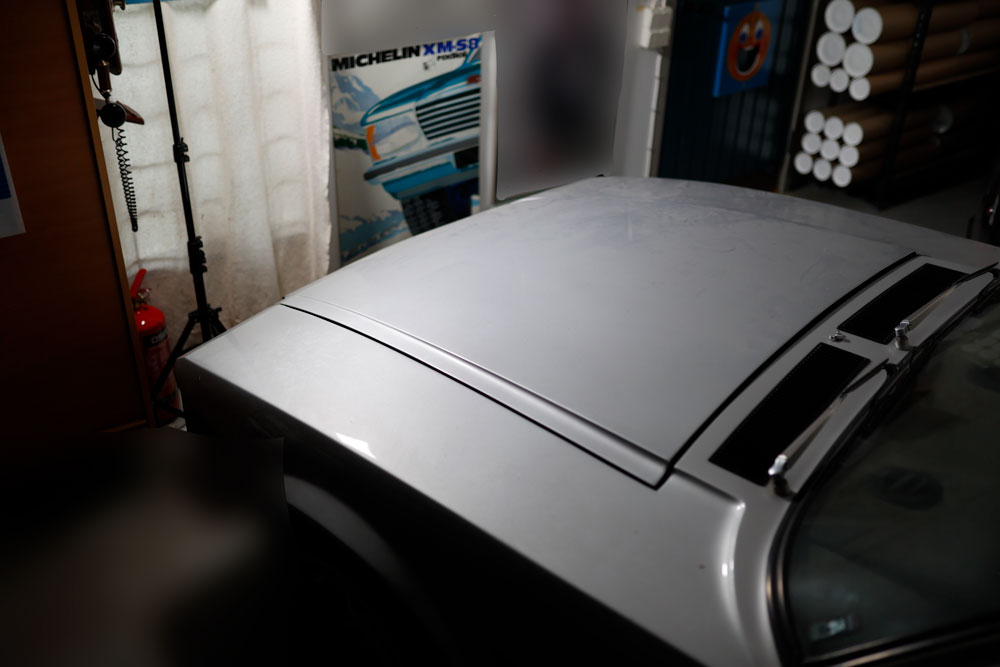
Gasoline leaking under the car
The Longchamp was produced until 1989, with a total of 409 examples made, consisting of 395 coupes and 14 “spyders.” However, it’s claimed that production actually ceased in 1986, and all cars sold after that were assigned the year of sale.
One of the options when purchasing the Longchamp was a 5-speed manual ZF gearbox, though only 17 people opted for it. This choice significantly affects prices today if you’re in the market for one. A well-maintained car with an automatic transmission can cost between €60-€100, while one with a manual transmission starts at €170 and goes up, provided you can find one.
The car’s battery has been charged in anticipation of my visit. I have the privilege of turning the key for the first time in over a decade. The fuel pump roars to life with a loud noise, typically indicating that it’s out of gas, while the dashboard lights up.
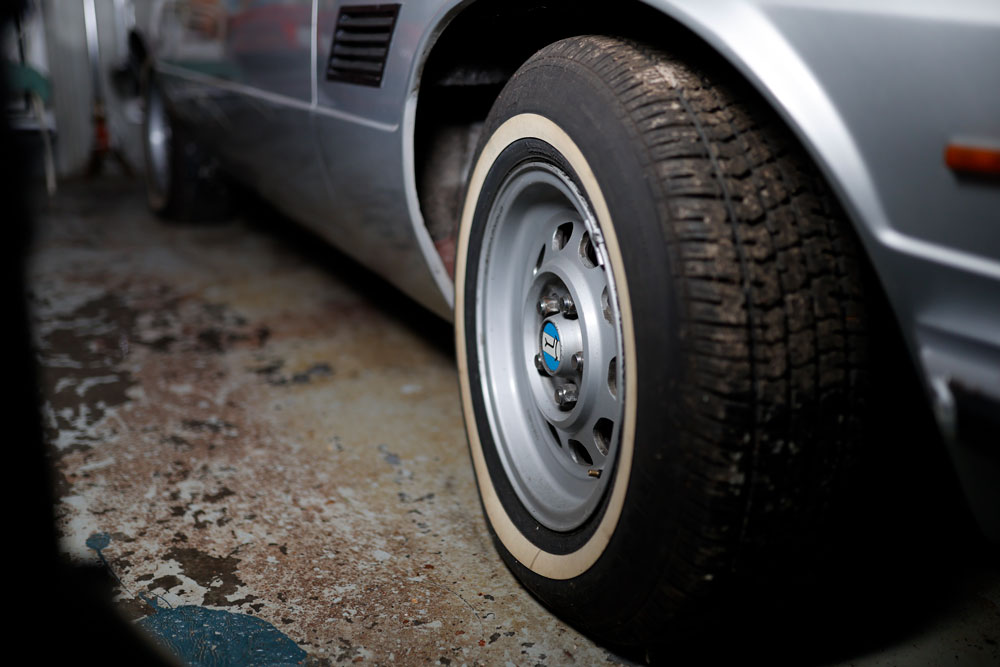
Upon inspection, I find a leak and a small puddle inside the left rear tire on the floor, which is the reason for running out of gas.
I turn off the key, and everything goes dark again.
The Longchamp features two separate tanks on each side, requiring the driver to select which tank the engine should draw fuel from using a button inside the car.
Tom also designed the Ferrari 365 California
The seats in the car could easily belong in any living room from the ’80s. The black leather upholstery creaks as I settle into the chair, and the delightful aroma of a classic car’s interior fills my senses. I take pleasure in spotting the classic blue and white De Tomaso logo on the steering wheel before me.
The car is designed to accommodate four people, although the back seat might not be the most comfortable if everyone in the car wants to sit comfortably.
Italian flair is evident in the car, with its speedometer proudly displaying a top speed of 300 km/h.
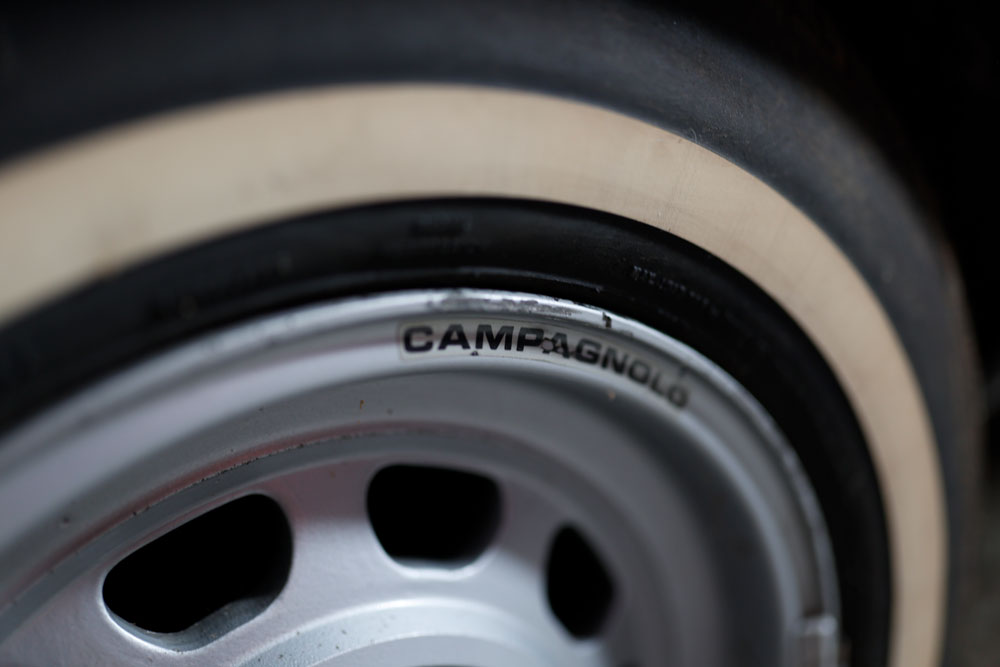
The car’s design is credited to Tom Tjaarda, who has worked with both Pininfarina and GHIA. He was an American designer best known for his work on the Pantera, Aston Martin Lagonda, and Ferrari 365 California.
Interestingly, the car’s initial design concept was intended for Lancia and would have been named “Marcia.” However, it didn’t gain traction there and instead found its identity as the De Tomaso Longchamp.
One of the unique features of this car is that it shares its headlights with the Ford Granada, its tail lights with the Alfa Romeo 1750/2000, and its gear lever and steering wheel with Ford.
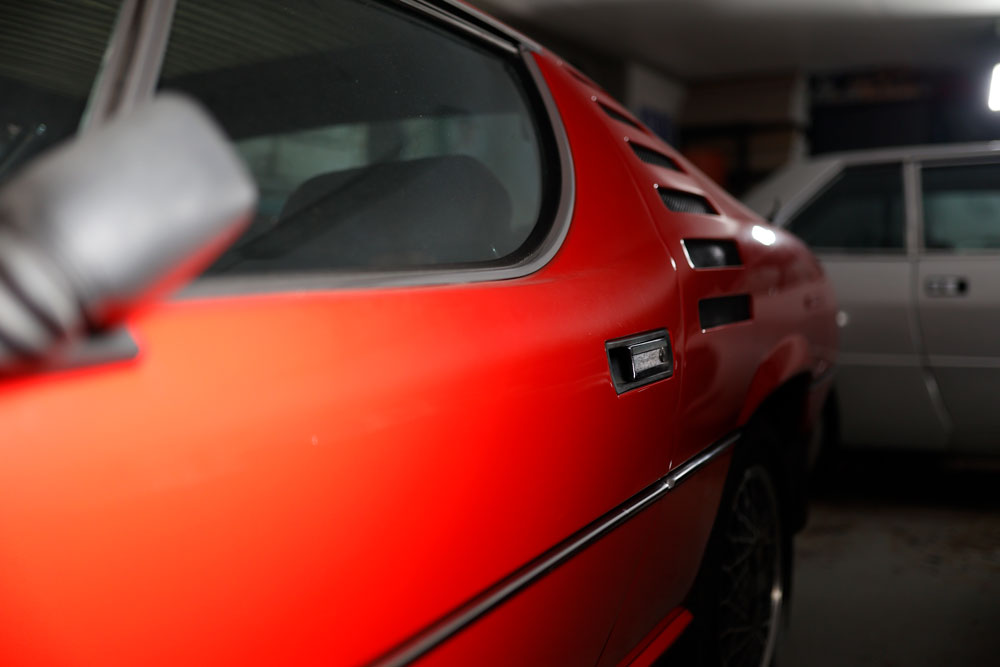
The Montreal’s design is derived from the Miura
I close the door of the Longchamp and gaze across the nearly flat roof to the other side of the garage, where a sparkling red Alfa Romeo Montreal and a dark blue Maserati Indy with its white interior sit. All cars are covered with a slight layer of dust.
The six gills on the side of the Alfa are purely decorative and have no functional purpose on the car.
Marcello Gandini of Bertone was the designer behind the Montreal, initially created for Italy’s pavilion at Expo 67 in Montreal, Quebec, Canada. Marcello was also the visionary behind a car often regarded as one of the most beautiful of all time: the Lamborghini Miura. Is there a connection between the gills at the door?
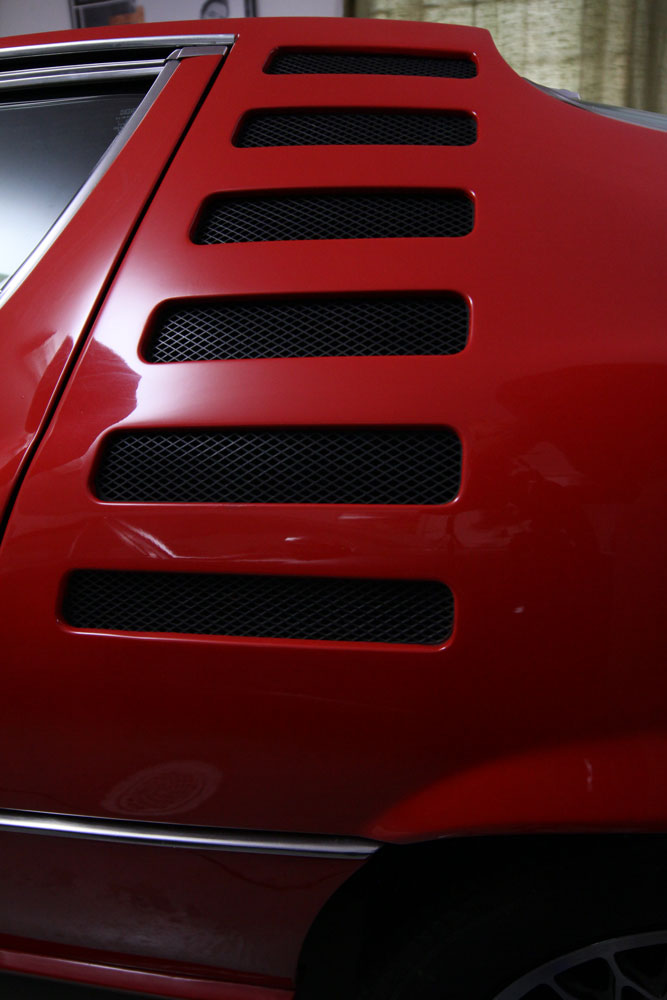
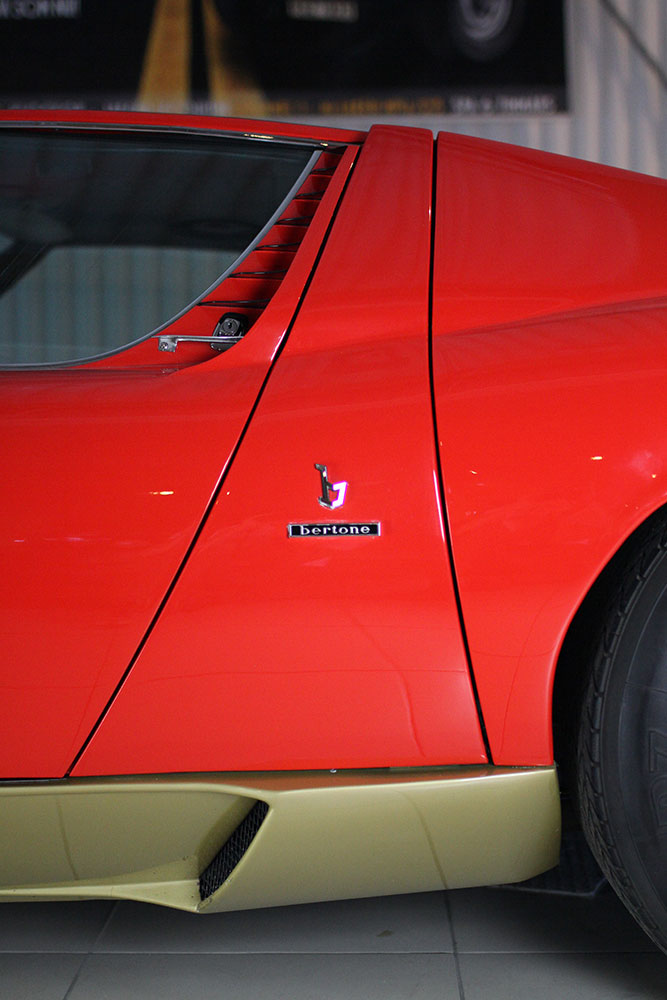
In 1967, two prototypes were built, each equipped with a 1.6-liter Giulia engine, and they were displayed during the Expo. Later, these prototypes found a home in the Alfa Romeo museum in Arese, Italy, where they remain to this day.
Production of the Montreal began in earnest in 1970, following its exhibition at the Geneva Fair that year. The drivetrain and design had evolved from the prototype, now featuring the V8 engine based of the Alfa’s 33 Stradale, with a displacement of 2593 cc. This 90° dry sump engine had an 80 mm cylinder bore and a stroke of only 64.5 mm, producing 197 hp and utilizing SPICA’s fuel injection system.
The Alfa underwent an engine overhaul in the mid-’90s, and once again, it was initially thought to be a straightforward task due to its “just” being a V8. However, it took six years to complete the overhaul, and the search for spare parts proved to be a daunting nightmare.
Cost more than both Jaguar and Porsche when launched
The car is positioned with its nose against the garage wall, so I can’t see the fine grooves that run halfway down over the four headlights in the front.
Those I’ve talked to who’ve driven a Montreal say it’s bumpy and quite challenging to drive.
I open the door and settle into the driver’s seat, noticing that the inside of the door is covered with a surface layer of something that shouldn’t be there, forming a gray pattern over the black interior.
The three-spoked wooden steering wheel is narrow in front of the two circular gauges on the futuristic dashboard, which feels somewhat plastic but was cutting-edge for its model year.
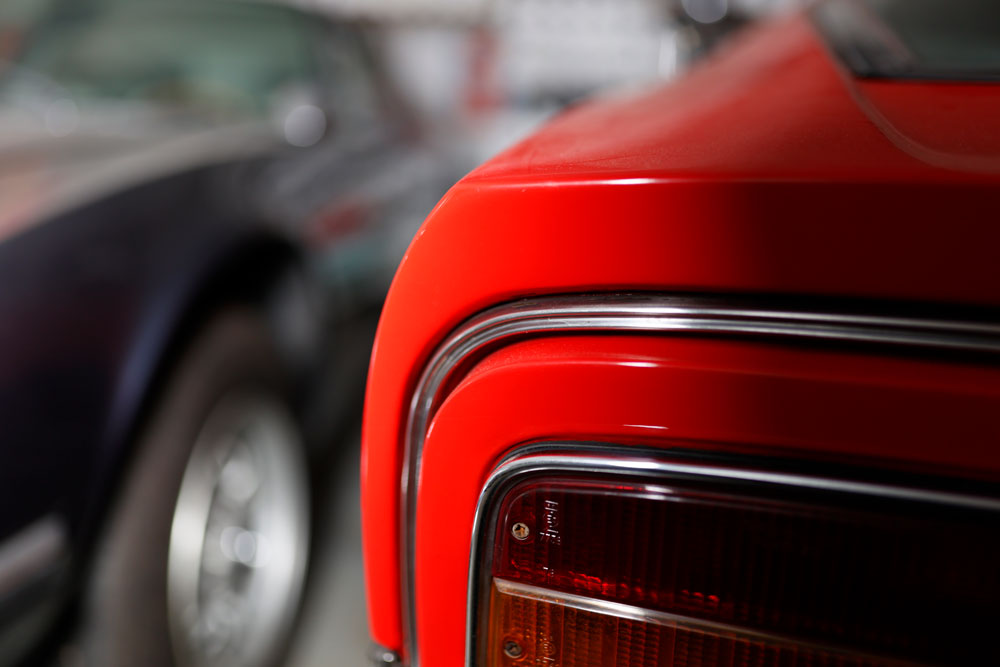
The pedals appear almost new against the red carpet, and the small black gearshift knob wrapped in red leather suggests that the ZF gearbox has five gears to play with.
The rear seat, like the gills on the outside, is more for show than practicality. I sincerely hope anyone sitting there doesn’t have long legs or is taller than 150 cm.
The price of this car was likely the most astonishing aspect when it was launched. A new Montreal in London cost around £5100, which was an incredibly hefty sum at the time and considerably more expensive than both the Jaguar E-Type and Porsche 911.
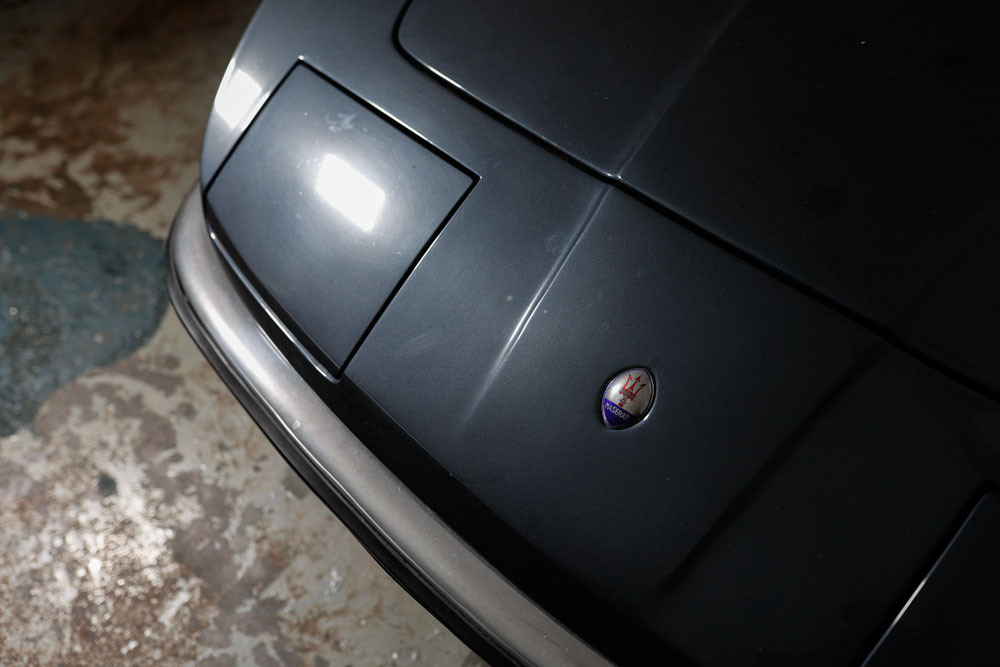
1104 Indy made
I step out and close the door before turning my attention to the flat-nosed and wedge-shaped Maserati.
On the hood, I notice clear traces of a cat that once walked across it.
The Indy is entirely original from the time it was purchased, with no modifications other than routine servicing.
It lacks power steering and any modern assistance, making city driving a bit challenging for those unaccustomed to using their arm strength.
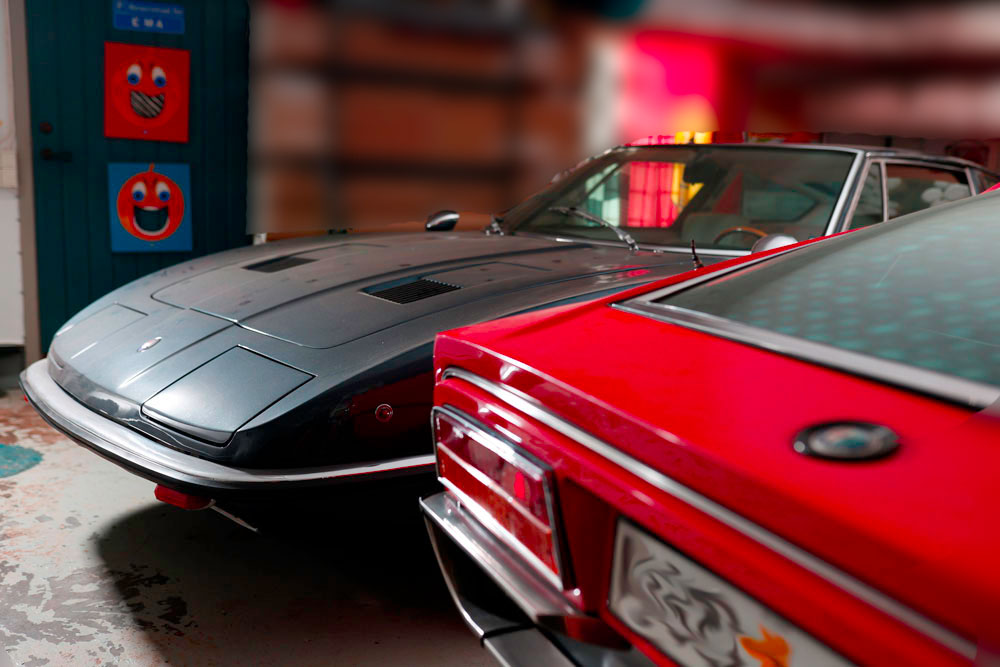
When Maserati introduced the car in 1969, the only available engine option was a 4.2-liter V8 known as the Tipo AM 107 V8. However, that changed the following year when a 4.7-liter engine was introduced, and in 1972, they increased the option to a 4.9-liter engine.
Like the Longchamp, this car was not produced in large quantities, with just 1,104 units built. The specific car I’m looking at here is from 1970 and is equipped with a 4.2-liter engine.
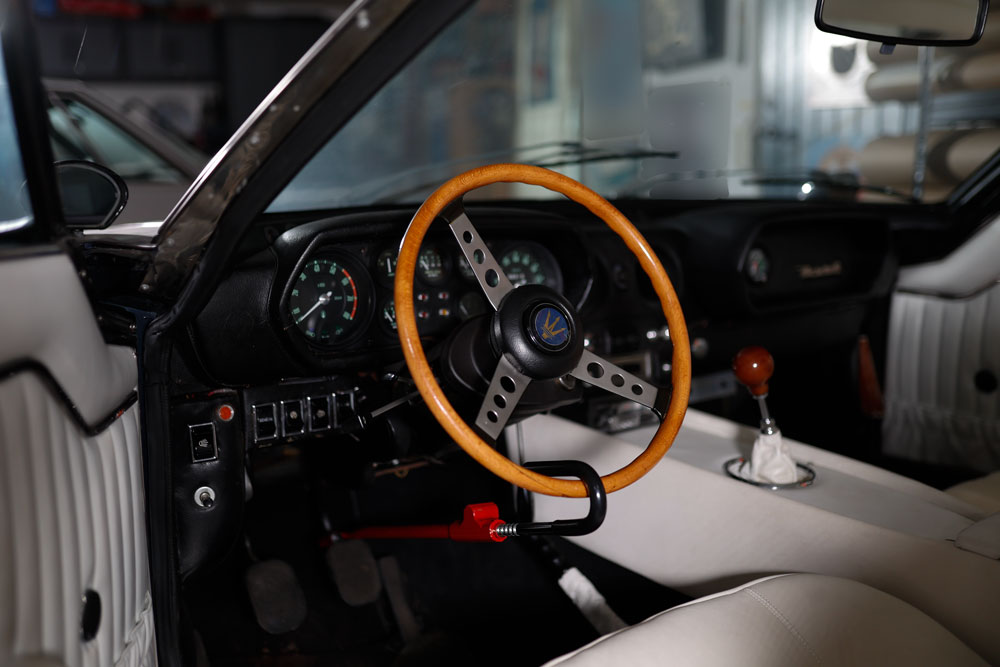
It will probably cost at least €5000 to get it running again
I open the long, slender driver’s door and step inside, sinking into the soft, plush white leather seats. It feels like I’m sitting on a classic TV couch with a wooden steering wheel in front of me. The A-pillars are narrow, offering an incredibly wide view.
The dashboard is divided into two distinct square sections. The driver has access to everything needed for driving, including the speedometer and tachometer, while the passenger can easily keep an eye on the clock.
The center console smoothly flows towards the radio, ashtray, and air vents, ultimately connecting seamlessly to the windshield. It’s incredibly beautiful, open, and stylish. Unfortunately, a few years later, they replaced it with a conventional instrument panel that extended from side to side.
I pop the hood and notice how the thin layer of dust jumps as it rises.
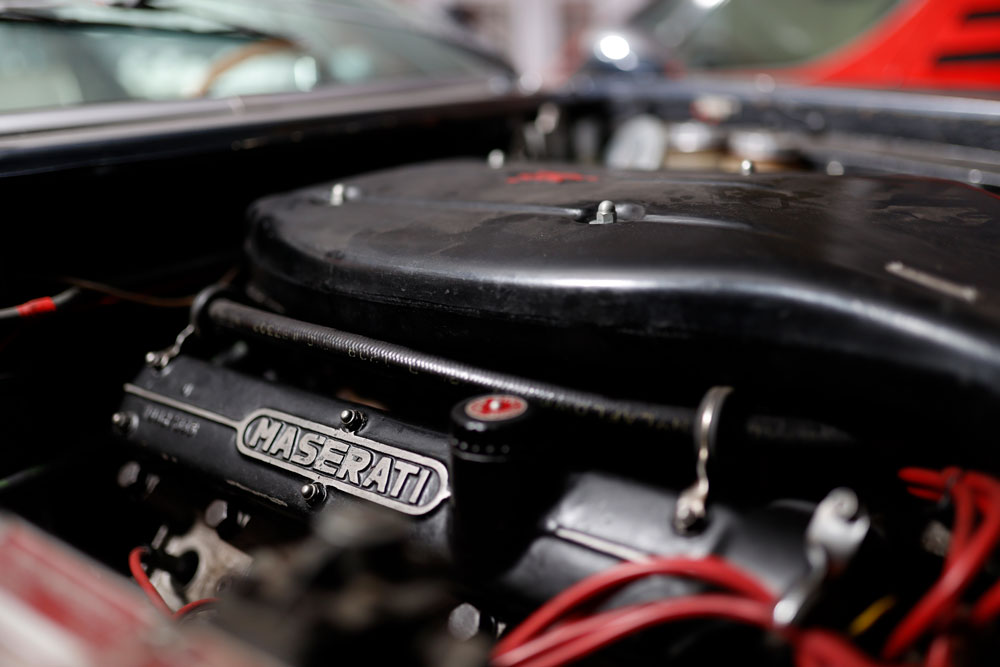
Beneath the hood lies the exquisite aluminum V8 with dual overhead camshafts, patiently waiting to be started once again. Under the large air cover adorned with the Maserati trident logo, there are four Weber carburetors eager to deliver a precise mixture of fuel into the cylinders, producing the impressive 260 horsepower developed at 5500 rpm. All of this power is then channeled through the classic 5-speed ZF gearbox.
Restoring this engine to working condition will likely cost at least €5000, given its extended period of inactivity. The total cost depends on whether you undertake the work yourself and the extent to which components have dried, shrunk, and aged over time.
The hunt must be what brings us together
After exploring the “pleasant” garage, I descend to the other two garages in the collection, which house more than 30 cars, all closely packed together.
The majority of the vehicles are Italian classics—Alfa Romeo, Lancia, Maserati, and Fiat—but there are also some unique additions, including two Citroens, an exceptionally old DS and a CX Prestige Turbo.
In one section, where the brick wall has been opened up, a robust 1968 Rover 3.5 Coupé stands, gazing out at a Bitter SC with a flat tire parked beside a 1982 Maserati Quattroporte III—the epitome of the boxy dictator-style car.
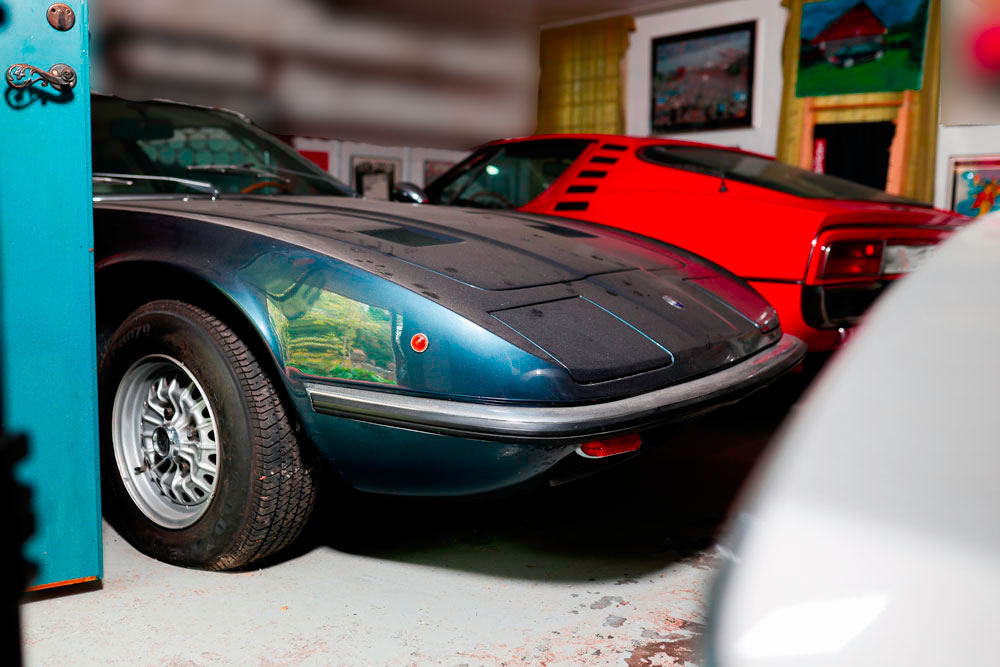
As I navigate through these garages, traversing decades of automotive history, various shapes, and designs, I see a reflection of myself within this collection. After all, the thrill lies in the hunt. Whether you have four or forty motorcycles or cars, there’s always the anticipation of discovering something new and intriguing that could complement the collection, even though you’ve grown attached to all the ones you already possess.
Personally, I’m hopeful that the next time I stop by we swing open the garage doors, roll the Longchamp out and fire it up. Perhaps not for an extended journey, but at least to savor the roar of the Cleveland engine.
I hope that this car collection doesn’t become an article or video on internet titled “40 years old Barn Finds” in the future. Do rather see some of the magic cars out on the streets again soon.


